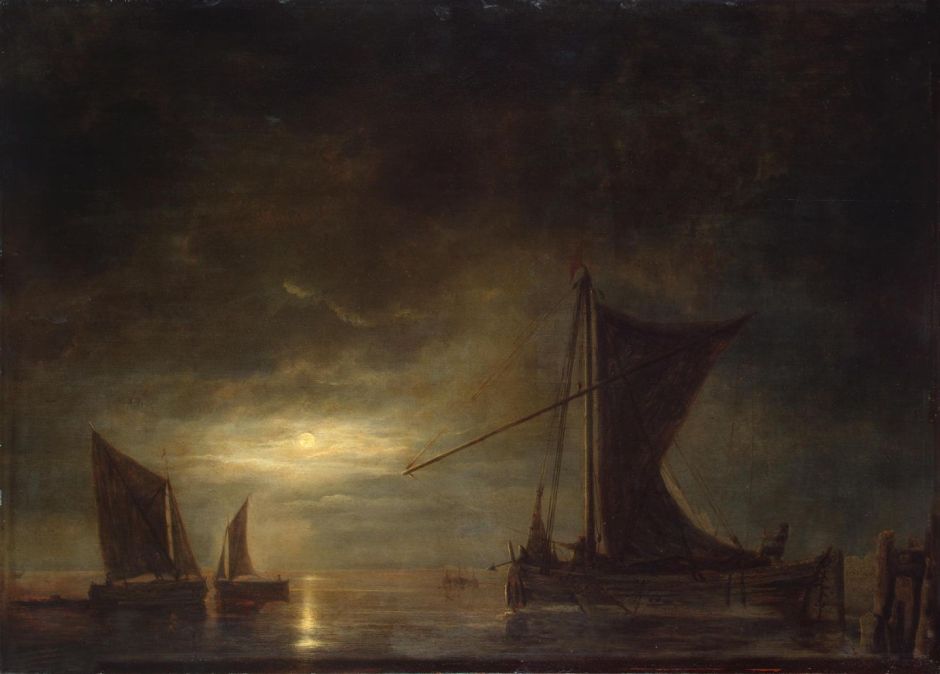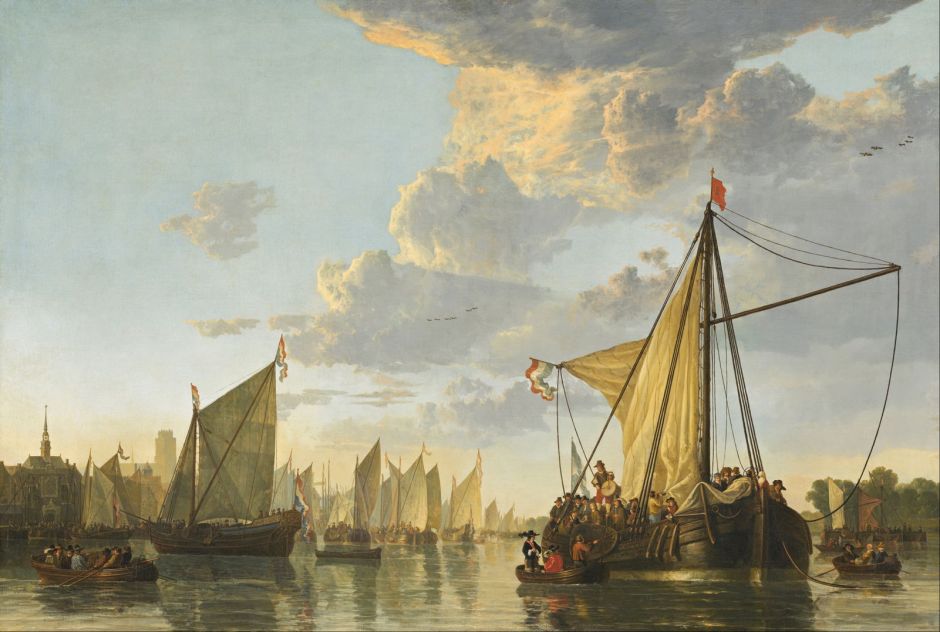The Dutch Golden Age: Water
A glance at a map of the Dutch Republic during its Golden Age reveals that very little was far from the sea, or one of the large rivers that flow through its countryside and cities. In the middle was the Zuiderzee, a large inland sea only kept at bay by a great many dikes.

With the popularity of landscape painting, it was inevitable that the sea, rivers and other bodies of water became a common feature in those views. This article shows a small selection from some of the most famous artists of the time.

Jan van Goyen’s View of Dordrecht with the Grote Kirk Across the Maas (1644) shows a familiar view of the city, with particular interest in its buildings. Its skyline is dominated by the still-unfinished 65 metre tower of the Grote Kerk, built between 1285-1470. There are many small boats at work on the choppy water, here depicted in an older fashion similar to works from the Renaissance.

Aelbert Cuyp’s View on the Rhine from the following year appears to have been the result of a trip up river, into steeper terrain inland. It is wonderfully sketchy, and might even be mistaken for one of Turner’s landscapes from nearly two centuries later. In the Netherlands, the lower reaches of this river form part of the great Rhine–Meuse–Scheldt delta, which includes both the major port and city of Rotterdam, and Dordrecht.

Inevitably, many of Cuyp’s finest landscapes show his home city, such as this View of the Maas at Dordrecht from about 1645-46. This makes best use of an extreme panoramic panel, now commonly used for such marine landscapes.

Cuyp also painted a few marine nocturnes, including this view of the Sea by Moonlight from about 1648, where he extended his exploration of the effects of light.

Philip de Koninck’s Wide River Landscape from about 1648-49 refers to a wide landscape rather than river, I believe. All seems at peace in the countryside, with livestock in the field in the foreground, and a small boat making its way under sail along the river.

Although Cuyp never seems to have become a more dedicated marine specialist, his paintings of ships including The Passage Boat from about 1650, are landmarks at the height of his career. Passage boats were those engaged in regular ferry trips between set ports, in this case probably Dordrecht and Rotterdam, a distance of little more than twelve miles (20 km) by water. With the Republic’s extensive networks of rivers and canals, these were a popular means of transport at the time. The figures in the boat are finely detailed, and include a drummer towards the stern.

At their best, Cuyp’s coastal landscapes, such as The Maas at Dordrecht from about 1650, are full of rich light, earning him the title of the Dutch Claude Lorrain. This shows another passage boat packed with passengers, together with its drummer.

Salomon van Ruysdael’s View of Alkmaar from the Sea (c 1650) is unusual in showing such a flat coastal landscape on a panel orientated not in landscape mode, but in portrait to include its fine cloudscape.

Cuyp’s grand view of The Valkhof at Nijmegen from about 1652-54 shows the Imperial castle that was to be demolished in 1798, on its small hill beside the river. The landscape is bathed in golden light, and broken clouds are tinged with similar Claudean colour as they drift through its lucent sky.

Jacob van Ruisdael’s The Shore at Egmond-aan-Zee from about 1675 was painted to the west of Alkmaar, on the North Sea coast in North Holland, with its stormier weather.

De Koninck’s River Landscape from the following year shows a single oarsman taking a small group of people along the river.

Many of de Koninck’s panoramas are painted on panels or canvases of normal proportions, and just look wide. Flat Landscape With a Broad River is more unusual for his use of a proper marine format. It also appears more sketchy, and has little staffage, as if it may even have been painted in front of the motif.